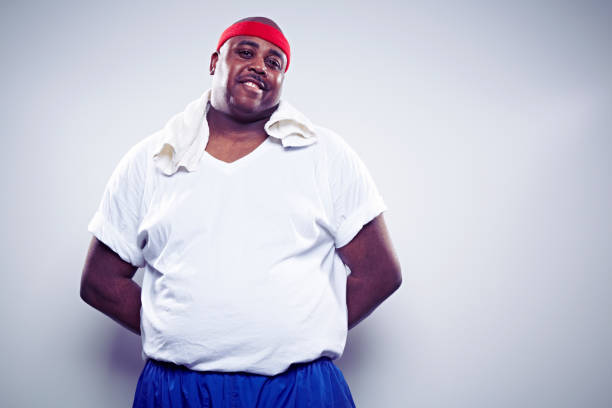
If you are trying to lose 100 pounds beyond diet and exercise, you may need to examine other areas of your life to understand how best to achieve weight loss.
People who have 100 pounds or more to lose know all about what they should be doing to lose weight, says Gail Curtis, assistant professor at Wake Forest University, Winston-Salem, NC.
In addition to nutrition and exercise, Curtis says it is important to consider stress, your sense of fulfillment, your work and home environment, and even people in your life who may be sabotaging your best diet efforts. Then you can concentrate on developing and sticking to a weight-loss plan.
How To Lose 100 Pounds & More
1.) It Starts With Counting Calories
Counting calories is going to be a part of this process. Here are guidelines to follow:
• If you want to lose 1-2 pounds a week, you have to cut out 3,500 calories, or roughly 500 calories a day.
• You never want to eat fewer than 1,200 calories a day, “and that’s on the low end,” says Curtis. You can always increase your physical activity, however.
• You can safely aim to lose 1 percent of your body weight per week; a woman weighing 250 pounds should aim for a 2.5-pound loss per week, eating about 1,250 calories less per day.
YOU SHOULD SEE: A Free Program For Those Who Need Help Losing Weight!
How to Count Calories
Counting calories involves not just the food you eat, but also the calories you burn through exercise.
• Keep a journal of what you ate, how much you exercised, and your thoughts and feelings at those times, and limit yourself to one weekly weigh-in to avoid focusing too much on the scale.
• Good nutrition is key, says Curtis. Many people who want to lose 100 pounds are used to eating foods that are high in calories and low in nutrition. The challenge is to practice the reverse: Learn to eat the correct portions of foods that are low in calories but high in nutrition, such as fruits, vegetables, whole grains, and low-fat dairy.
HINT: Many have lost large amounts of weight by eating the same foods they used to eat, but just smaller portions AND moderate exercise. The key is consistency.
2.) Understand the Stages Of Large-Goal Weight Loss
How long it will take to lose 100 pounds varies — a 250-pound woman might need 40 weeks or more to achieve her goal — but Curtis recommends that you develop weekly and monthly goals that will help you track your progress and avoid becoming overwhelmed or discouraged. Attainable, feel-good goals include:
• Being able to get down on the floor and play with your children or grandchildren.
• Being able to walk around the mall without feeling short of breath.
• Being able to do 20 minutes of physical activity three days a week — mornings are best, says Curtis (and work up to 30 minutes most days of the week).
• Eating four servings of fruit or veggies every day of the week. This also means you need to control portion sizes: Be mindful of portion sizes and avoid overeating. Learning to listen to your body’s hunger and fullness cues can help you make healthier choices.
• Eating a healthy breakfast every day that includes a low-fat protein
• Set up your environment to help you succeed: Many of us can convince ourselves that we just need to have more willpower or discipline. But our environment is far too influential for us to rely solely on those things. Create an environment that makes it easier for you to do the things you want to do more of and harder to do the things you want to do less of.
That means...
- Only stock your kitchen with healthy snacks. We know you're going to hungry and want to snack, so only have snacks that HELP you, not hurt you.
- Create a "weight loss refrigerator". A weight loss refrigerator is one that only has food that helps in your weight loss. Foods like: yogurt, dark berries, dark chocolate, egg whites, snack sized veggies, cut up fruit, etc.
- Have people around you that support your goal. Everyone who has loss a lot of weight also talk about the weight of losing friends. It's important to have a good group of people around you that lift you up, not tear you down (that includes family, too)!
3.) Exercise Is Non-Negotiable
Being physically active is an essential part of losing 100 pounds. “This was the biggest challenge for our clients,” says Curtis. “They would say they couldn’t do it because of their ankle or their back pain. But everybody can do an exercise program.”
Curtis recommends:
• If you have a lot of joint pain, start with chair or water-based exercises.
• Try walking short distances and gradually building up your endurance. Start with 25 minutes a day, every day for a week and slowly move up 10 minutes every week until you reach 45 minutes to an hour. Then begin to see if you can exercise twice daily three times a week. The key is consistency
• Involve a physical trainer or an exercise buddy as you get moving again.
After You Achieve Your Goal...
Many people worry about how their bodies will look once they lose 100 pounds. This “depends on your age and condition of the skin,” says Curtis. “Some people’s skin will retract. For some, it will not.” Once you reach your goal, if you find that sagging skin bothers you, you might want to investigate cosmetic surgery to remove excess skin.
Check This Out: Have Diabetes? Here's Help...For FREE!
Of course, the health and fitness advantages of losing 100 pounds, plus how much better you will look and feel in clothes, will more than make up for any after-effects of being overweight. With determination and a few smart diet strategies, you can achieve your goal.








